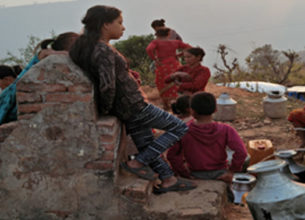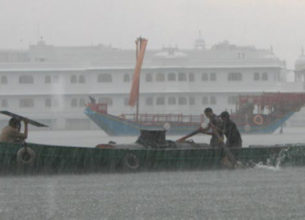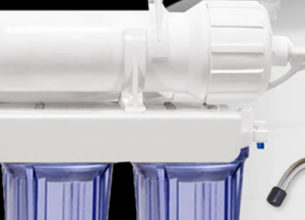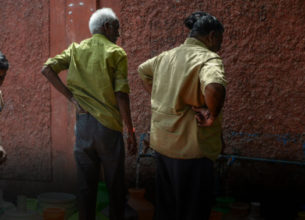ENSURING WATER SECURITY
25, Jan 2020

Prelims level : Schemes
Mains level : GS-II Government Policies and interventions for Development in Various Sectors and Issues Arising out of their design and Implementation.
Context:
- Recently, the operational guidelines for Jal Jeevan Mission (JJM) has been released. The initiative aims to provide Functional Household Tap Connections (FHTC), to every rural household i.e., ‘Har Ghar Nal Se Jal’ by 2024.
What is the status of household water connections in India?
- Out of 17.87 crore rural households in the country, about 81.67% households are yet to have tap connections for water.
- As the National Sample Survey Office’s (NSSO) 76th round in rural India, just 11.3 per cent of the rural households receive potable water directly at homes.
- In urban India, 40.9 per cent households have piped water connections.
- Around 58.3 per cent of households still rely on hand pump, tube well, public tap, piped water from neighbour, protected or unprotected well, and private or public taps.
What is Jal Jeevan Mission?
- JJM focuses on integrated demand and supply-side management of water at the local level.
- It includes creation of local infrastructure for source sustainability like rainwater harvesting, groundwater recharge and management of household wastewater for reuse.
- Waterbeing a subject mentioned in the State List, the guidelines for the scheme were formed by the Centre in close consultation with the state governments.
Works to be undertaken under JJM:
- Piped Water Supply infrastructure for tap water connection to every household
- Reliable drinking water source development/augmentation of existing sources
- Transfer of water between villages
- Technological intervention for water treatment to make water potable
- Greywater(Any domestic wastewater produced, Excluding Sewage) Management
- Capacity Building of various stakeholders and support activities to facilitate the implementation.
Implementation of JJM:
- The Scheme will be implemented at four levels- National, State, District, and Gram Panchayat
- Paani Samiti/User Group:
- It is a statutory committee of the Gram Panchayat.
- There is a need for community participation, ownership and contribution in all decisions pertaining to water supply systems.
- Therefore, community-led partnership to achieve the objectives of JJM will help in bringing long term sustainability.
- Role of Women:
- Women will play a vital role from being beneficiaries to getting empowered and playing leadership.
- As per the guidelines, there has to be at least 50% representation of women in the Paani Samiti.
- Complementary Schemes:
- Similar schemes like Atal Bhujal Yojana (for sustainable management of groundwater with community participation) will play a crucial role, as groundwater is an important component in JJM.
Funds for the implementation of JJM
- The scheme is said to work in convergence with the other existing schemes to prevent creation of a parallel water supply infrastructure deviating from the approved plan. It will work in convergence with–
- MGNREGA funds
- Grants under Finance Commission, State Finance Commission,
- District Mineral Development Fund (DMDF),
- MPLADS, MLALADS, or donations, etc.
- ‘Rashtriya Jal Jeevan Kosh’ will mobilize and accept donations/contributions received from various sources to fund JJM.
- The total project is estimated to cost about ₹3.60 lakh Crore. The fund sharing pattern between the Centre and states is 90:10 for Himalayan and North-Eastern States, 50:50 for other states, and 100% for Union Territories.
Challenges to the Implementation
- Sustainability:
- Household water connection should also be linked to the availability of water in those taps.
- In India, there is a mismatch between water demand and water availability.
- By 2050, it is expected that this gap will get widened.
- Coverage:
- The issue of supplying water to the households located in the peripheral areas of the city (viz. the marginal population), as piped supply is not physically feasible in difficult terrain.
- Capacity Building:
- State actors and policy-makers are poorly equipped with tools for formulation and implementation of the water management strategies.
Way Forward:
- More focus towards water management– There is a need to pay focussed attention and planning for the efficient usage of freshwater.
- Managing the demand side of water– There should be a region-specific plan for water-stressed states.
- Participation –The participation of individuals, NGOs and different communities in the water management process shall be Promoted.
- Role of Government –The Government needs to holistically handle the supply as well as the demand side of Water Management











